Alaska whale photos
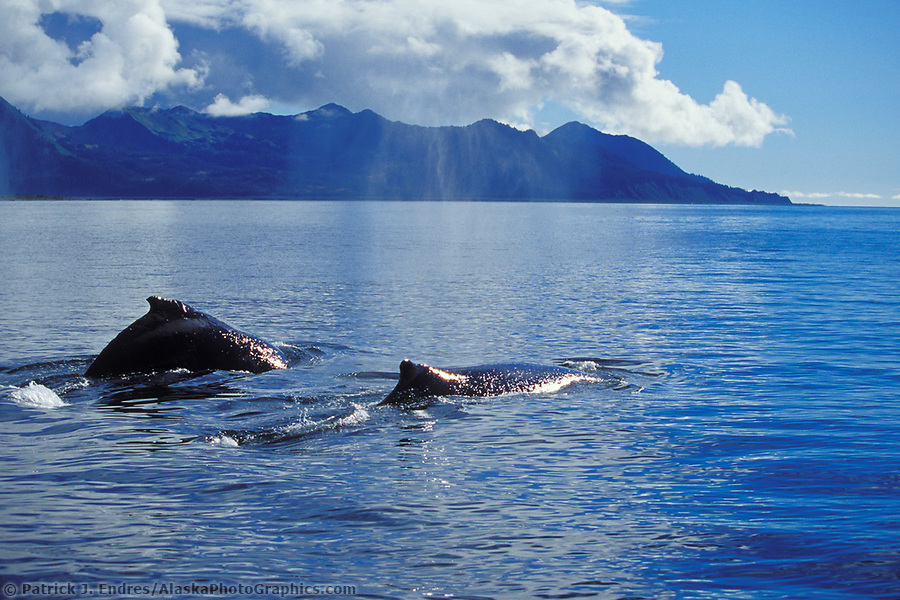
Humpback whale, Prince William Sound, Alaska
Alaska’s food-rich waters support eight species of whales. Some live in the waters year-round, and some migrate here in the summer to feed. All of the Alaska whale photos on this site are available as stock photos for commercial licensing or as fine art display pictures for home and office decor.
- Search ALL Whale Photos
- Search Killer Whale (Orca) Photos
- Search Humpback Whale Photos
Killer Whale (Orcinus orca)
The killer whale is technically not a whale but rather the most prominent member of the oceanic dolphin family. In Alaska, there are two types of orcas: Residents and Transients. They are differentiated primarily by their diet and some behavioral variations. The terms “resident” and “transient” do not imply staying around and departing. The Residents feed predominantly on fish, and the transient orcas hunt primarily marine mammals. Groups called pods to form lifelong bonds and frequent the same areas. For further reading, see The Killer Whales of Prince William Sound by Craig Matkin.
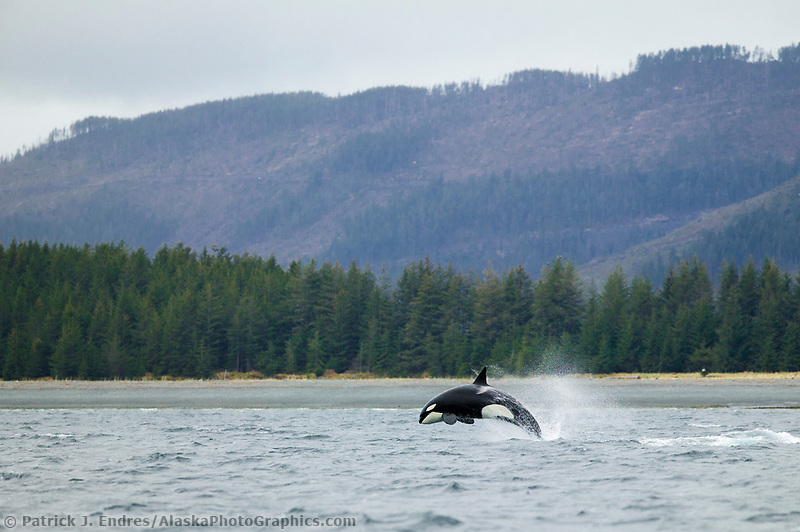
Orca, or killer whale breaches in Port Gravina, Prince William Sound, Alaska. Killer whales are social animals that live in stable family-related groups and travel the waters off Alaska’s coast. (Patrick J. Endres / AlaskaPhotoGraphics.com)
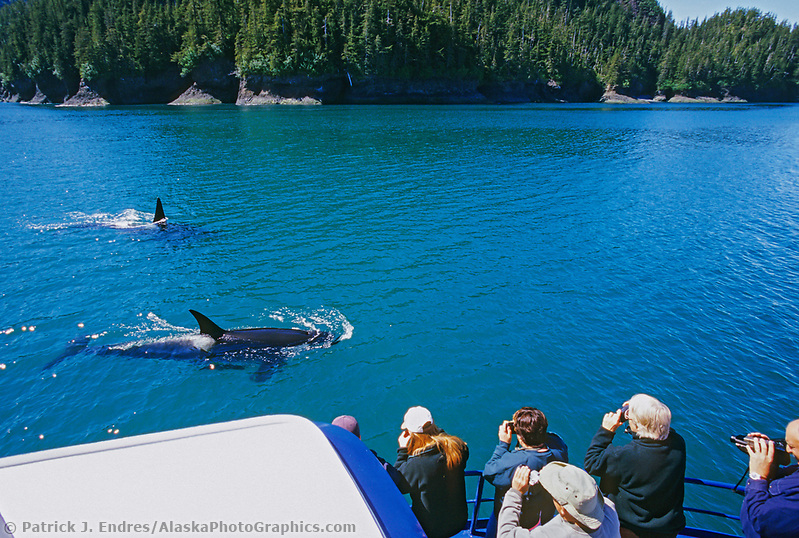
Tourists view and photograph killer whales (Orcas) from the bow of a boat in northern Prince William Sound, Alaska. (Patrick J. Endres / AlaskaPhotoGraphics.com)
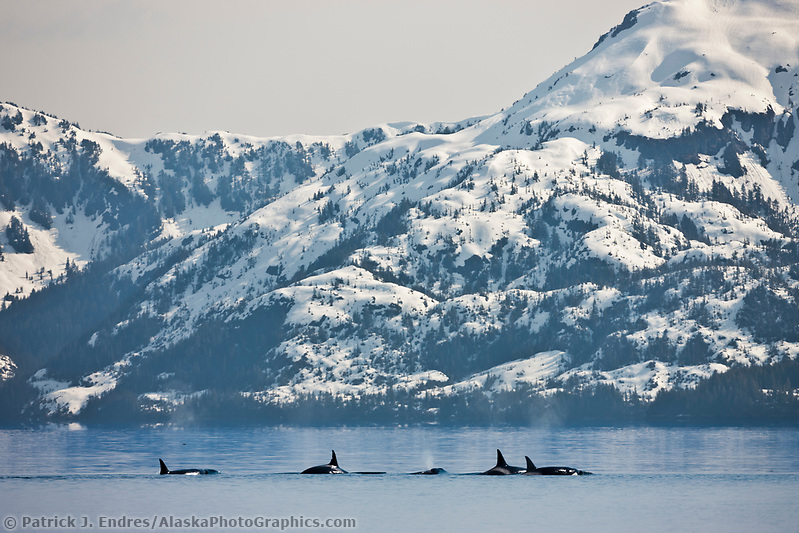
Orcas, or Killer whales, Prince William Sound, Southcentral, Alaska (Patrick J. Endres / AlaskaPhotoGraphics.com)
Humpback Whale (Megaptera novaeangliae)
Humpback whales are large baleen whales averaging 40-50 feet in length and weighing up to 79,000 pounds. Their unique shape and acrobatic tendencies make them easy to spot, mainly when they breach out of the water. Humpbacks come to Alaska to feed on the abundant krill that thrive in the calm northern waters. In the winter, the whales migrate, sometimes 15,000 miles or more, to warmer waters where they breed and give birth. They live off their fat reserves in the winter. Because of this, they feed aggressively in the summer with various methods, including bubble net feeding, lunging, and stunning fish by slapping the water. Humpback whales are commonly seen in the Southeast and Southcentral regions of Alaska.
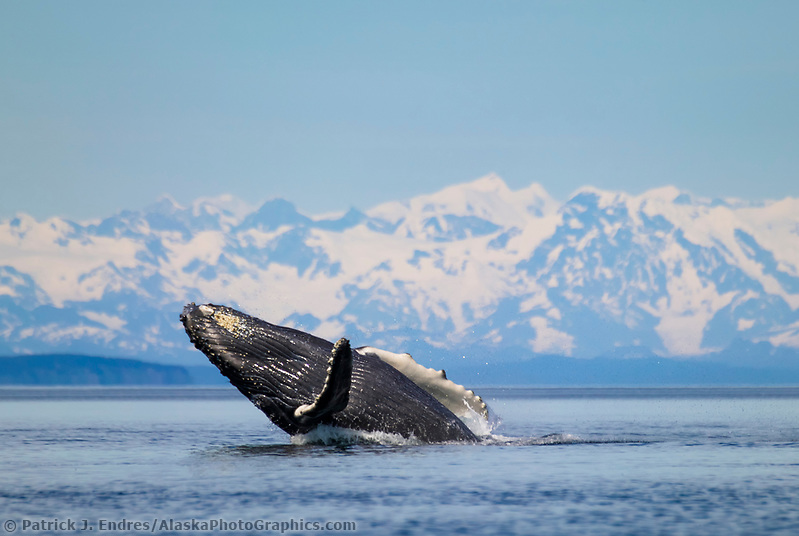
Humpback whale breaches, Chugach mountains, Montague straits, Prince William Sound, Alaska (Patrick J. Endres / AlaskaPhotoGraphics.com)
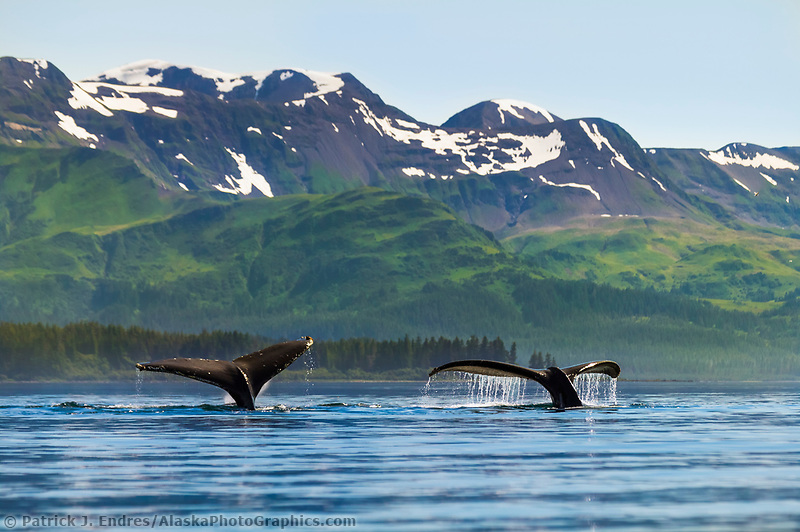
Humpback whales, Montague Island, Montague straits, Prince William Sound, Alaska (Patrick J. Endres / AlaskaPhotoGraphics.com)
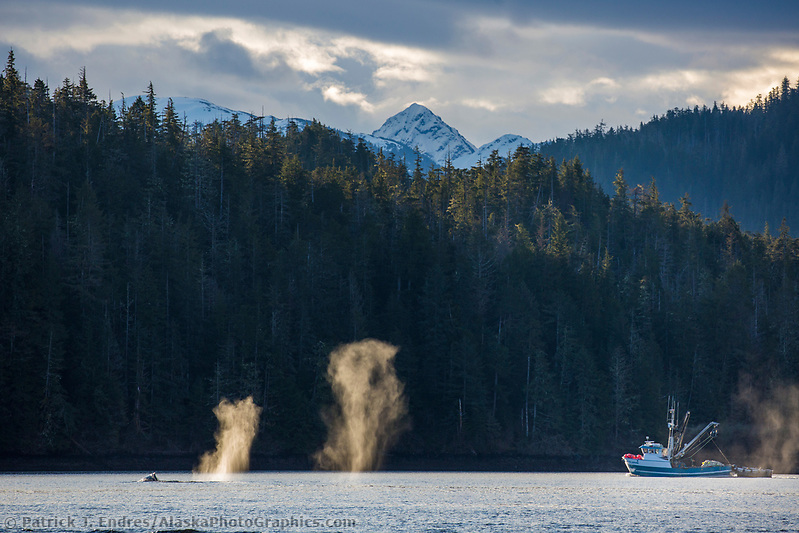
Humpback whales feed on Herring in the Sitka Sound area in southeast Alaska. (Patrick J Endres / AlaskaPhotoGraphics.com)
Fin Whale (Balaenoptera physalus)
The Fin Whale is long and slender, the second largest whale after the blue whale. It is found worldwide in all oceans except at the poles near icepack. The fin whale eats small fish, squid, and crustaceans, by swimming with its mouth open, then closing it to filter out the water through its baleen. Mating occurs every two-three years during the winter in temperate waters, and while one calf is standard, as many as six have been reported.
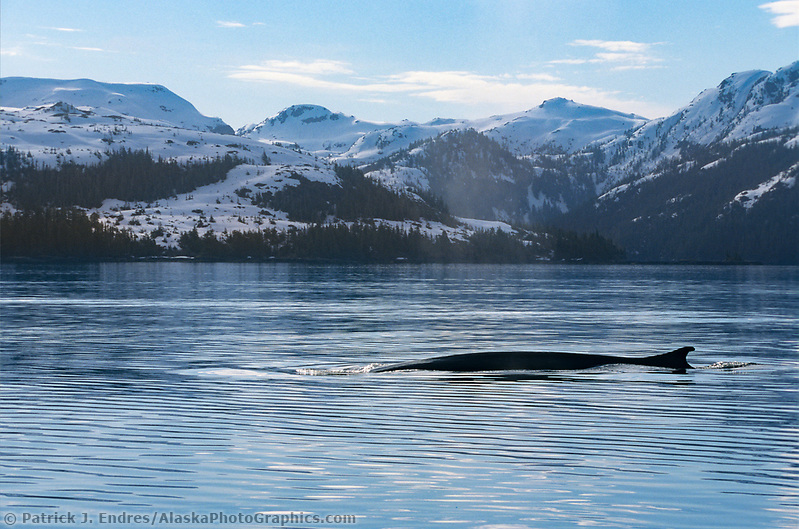
Fin Whale, Prince William Sound, Alaska (Patrick J. Endres / AlaskaPhotoGraphics.com)
Bowhead Whale (Balaena mysticetus)
The Bowhead whale thrives in Arctic waters, with a thick layer of fat (2 feet) insulating it from the chilling waters. They feed on plankton and migrate seasonally, based on the icepack. The Inupiat of Arctic Alaska has long hunted the whale, which remains a vital part of their culture and food source. The Inupiat Heritage Center in Barrow, Alaska, tells the story of the Inupiat people and their relationship to the Arctic landscape and Bowhead whales. It was designed as an inspirational facility to promote and protect Iñupiaq culture, history, and language through exhibits, classes, performances, and educational activities.
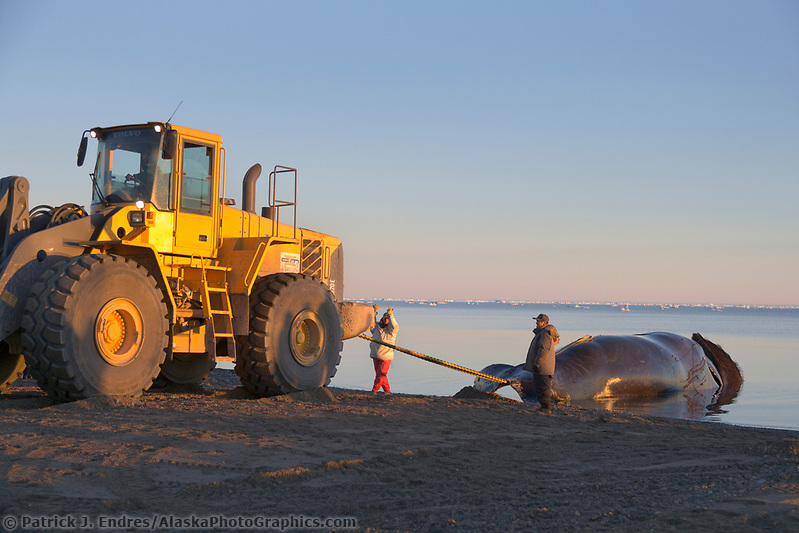
Inupiat whale hunters return to the Village of Kaktovik on Barter Island, Beaufort Sea, Arctic Alaska, with a Bowhead whale taken under the subsistence harvest quota. (Patrick J. Endres / AlaskaPhotoGraphics.com)
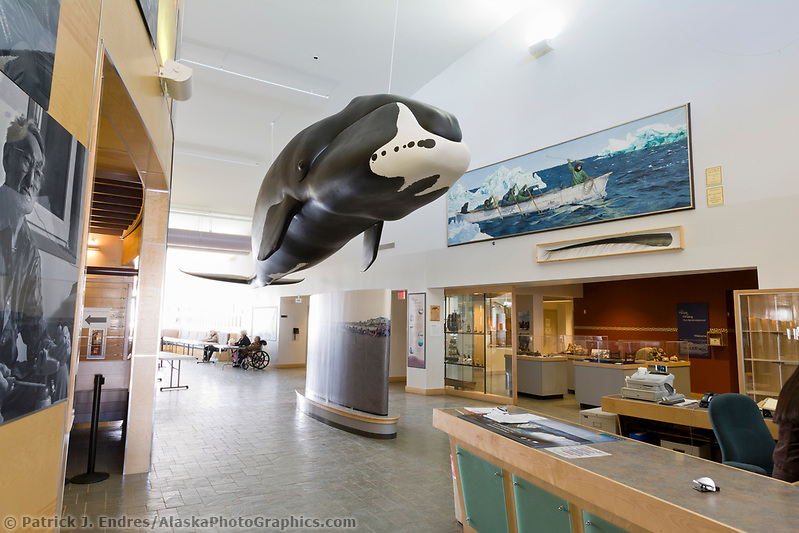
Bowhead whale in the Barrow Museum, Barrow, Alaska (Patrick J. Endres / AlaskaPhotoGraphics.com)
